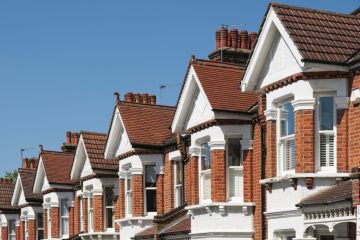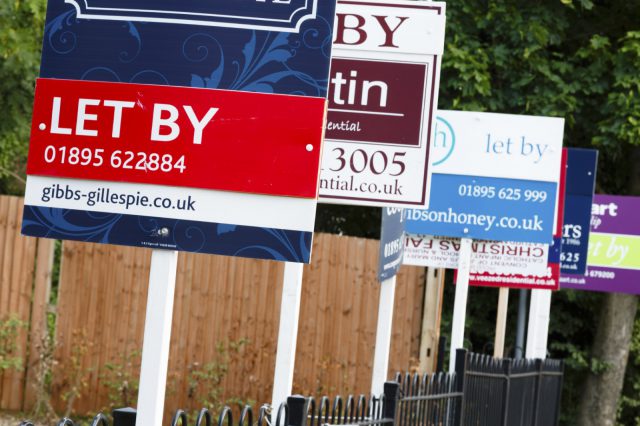In some parts of the UK, households suffer broadband speeds that can be as much as 135 times slower than the fastest speeds in the country, according to uSwitch.
The average broadband speed on Williamson Road, Romney Marsh, Kent is a terrible 0.535Mbps. This means that it would take about 19 hours to download a two-hour HD film, and 49 minutes for a 20-song music album, uSwitch’s research found.
The complete opposite is found on Sandy Lane, Cannock, Staffordshire, where speeds are 135 times faster, and are an average of 72.86Mbps. Downloading the same film here would take just eight minutes, and only 22 seconds for the same album.
The study revealed a wide gap between broadband speeds around the UK. A third of the country still struggles with speeds less than 5Mbps, and 23% are even on less than 3Mbps.
Broadband speed can be affected by: The user’s distance from the nearest exchange; the broadband provider; and sometimes the property itself, such as thick walls.
The fastest and slowest speeds are spread all around the UK, however, the north of England sees twice as many quick streets as the south, found the survey of the 30 fastest and slowest streets.
Speeds can often vary massively within the same county. Three of the fastest streets are in Staffordshire, but as are two of the slowest. In another county, the average download speed on Cheadle Road, Alton, Stoke-on-Trent is 54 times slower than on Werrington Road, Bucknall.
The findings are based on over one million speed tests run by broadband users in the last six months.
Some households may be able to put up with slow speeds, but it can be a huge problem for small businesses. Broadband issues affect half of all small businesses in rural areas, another study found.
The Federation of Small Business revealed that 49% of rural small firms are not satisfied with the quality of their broadband, compared with 28% in cities.1
However, the number of people experiencing superfast broadband is growing. Over a fifth of broadband users now get average speeds of over 30Mbps, a rise from 15% only a year ago.
UK Streets with the Fastest Broadband Speeds1
|
Position
|
Street Name & Location |
Average Download Speed (Mbps)
|
| 1 |
Sandy Lane, Hatherton, Cannock, Staffordshire |
72.86 |
| 2 |
Stockfield Road, Yardley, Birmingham, West Midlands |
71.37 |
| 3 |
Aigburth Drive, Liverpool, Merseyside |
71.2 |
| 4 |
Southhouse Broadway, Edinburgh, City of Edinburgh |
68.53 |
| 5 |
Winchcombe Close, Swindon, Wiltshire |
68.41 |
| 6 |
Alexandra Court, East Lindsey, Skegness, Lincolnshire |
68.19 |
| 7 |
The Close, Conway Avenue, Thorton-Cleveleys, Blackpool |
65.29 |
| 8 |
University Terrace, Pittenweem, Anstruther, Fife |
64.62 |
| 9 |
Bulwer Gardens, Barnet, Greater London |
64.56 |
| 10 |
New Church Road, Hove, The City of Brighton & Hove |
61.03 |
| 11 |
Rowantree Crescent, Dundee, Dundee City |
60.91 |
| 12 |
Barnacre Road, Longridge, Preston, Lancashire |
60.78 |
| 13 |
Byron Road, South Croydon, Greater London |
60.23 |
| 14 |
King Street, Market Rason, Lincolnshire |
59.45 |
| 15 |
Camarthen Way, Rushden, Northamptonshire |
58.27 |
| 16 |
Birkrig, Skelmersdale, Lancashire |
58.11 |
| 17 |
Becket Mews, Canterbury, Kent |
57.33 |
| 18 |
Friars Street, Hereford, Herefordshire |
57.16 |
| 19 |
Luss Avenue, Greenock, Inverclyde |
56.12 |
| 20 |
Castle Lea, Caldicot, Monmouthshire |
53.11 |
| 21 |
St John’s View, Mansfield, Nottinghamshire |
52.93 |
| 22 |
Caiesdykes Road, Aberdeen, Aberdeen City |
52.75 |
| 23 |
Tuesley Lane, Godalming, Surrey |
52.6 |
| 24 |
Longacres, Cannock, Staffordshire |
52.38 |
| 25 |
Harcourt Road, Aberdeen, Aberdeen City |
49.69 |
| 26 |
Monza Close, Buckley, Flintshire |
49.49 |
| 27 |
Werrington Road, Bucknall, Stoke-on-Trent, Staffordshire |
49.01 |
| 28 |
Dalrymple Road, Brockley, Greater London |
48.96 |
| 29 |
Brinkworth Close, Chippenham, Wiltshire |
48.88 |
| 30 |
Highwood Drive, Nailsworth, Stroud, Gloucestershire |
48.74 |

The Best and Worst Broadband in Britain
Broadband Expert at uSwitch, Ewan Taylor-Gibson, comments: “The UK’s slowest street broadband speeds are so sluggish you could fly to the Bahamas and back again in the time it takes to download a film.
“Likely causes include the user’s distance from the nearest exchange or issues within the properties themselves. Wireless connections can be affected by the thickness of walls, for example, but your broadband provider can usually offer a solution if that’s the case.”
He says that bad speeds can make people feel isolated, have an affect on businesses and schools, and even affect house prices.
He adds: “A nationwide rollout of fibre broadband to the furthest and most remote corners of the UK has never been more urgent.”1
UK Streets with the Slowest Broadband Speeds1
|
Position
|
Street Name & Location |
Average Download Speed (Mbps)
|
| 1 |
Williamson Road, Lydd-on-Sea, Romney Marsh, Kent |
0.535 |
| 2 |
Great Fen Road, Soham, Ely, Cambridgeshire |
0.547 |
| 3 |
Styles Court, Luton, Bedfordshire |
0.8 |
| 4 |
Mardy Lane, Clun, Craven Arms, Shropshire |
0.884 |
| 5 |
Weston Beggard Lane, Weston Beggard, Hereford, Herefordshire |
0.914 |
| 6 |
Cheadle Road, Alton, Stoke-on-Trent, Staffordshire |
0.916 |
| 7 |
Mill Lane, Horndon on the Hill, Stanford-le-Hope, Essex |
0.928 |
| 8 |
Llansadwrn, Menai Bridge, Isle of Anglesey |
0.948 |
| 9 |
Solway Road, Moresby Parks, Whitehaven, Cumbria |
0.963 |
| 10 |
Shorthorn Road, Stratton Strawless, Norwich, Norfolk |
0.964 |
| 11 |
Foxbury Road, St Leonards, Ringwood, Dorset |
0.976 |
| 12 |
Corrie Road, Kinlochleven, Highland, Scotland |
0.985 |
| 13 |
The Crescent, Allington, Allington Gardens, Grantham, Lincolnshire |
1.01 |
| 14 |
The Line, Linton, Ross-on-Wye, Herefordshire |
1.025 |
| 15 |
Uxbridge Road, Feltham, Greater London |
1.03 |
| 16 |
North Lopham Road, Kenninghall, Norfolk |
1.037 |
| 17 |
Coningsby Gardens East, Woodthorpe, Nottingham, Nottinghamshire |
1.039 |
| 18 |
Kingfisher Drive, Birmingham, West Midlands |
1.105 |
| 19 |
Sovereign Fold Road, Leigh, Wigan, Greater Manchester |
1.116 |
| 20 |
McKinnon Drive, Mayfield, Dalkeith, Midlothian |
1.122 |
| 21 |
Brampton Road, Hereford, Herefordshire |
1.153 |
| 22 |
Marlingford Road, Easton, Norwich, Norfolk |
1.174 |
| 23 |
Tarr Steps, Thornaby, Stockton-on-Tees, County Durham |
1.226 |
| 24 |
Thornham Lane, Middleton, Manchester |
1.236 |
| 25 |
Axial Drive, Colchester, Essex |
1.244 |
| 26 |
Balmoral Drive, Willenhall, West Midlands |
1.249 |
| 27 |
Grange Terrace, Pelton Fell, Chester le Street, County Durham |
1.258 |
| 28 |
Bitham Lane, Stretton, Burton-on-Trent, Staffordshire |
1.267 |
| 29 |
Stubb Road, Hickling, Norwich, Norfolk |
1.314 |
| 30 |
Manor Close, Denton, Manchester |
1.32 |
1 http://www.thisismoney.co.uk/money/bills/article-2989700/Britain-s-best-worst-streets-broadband-speed-revealed.html?ITO=1490&ns_mchannel=rss&ns_campaign=1490&utm_source=twitterfeed&utm_medium=twitter










